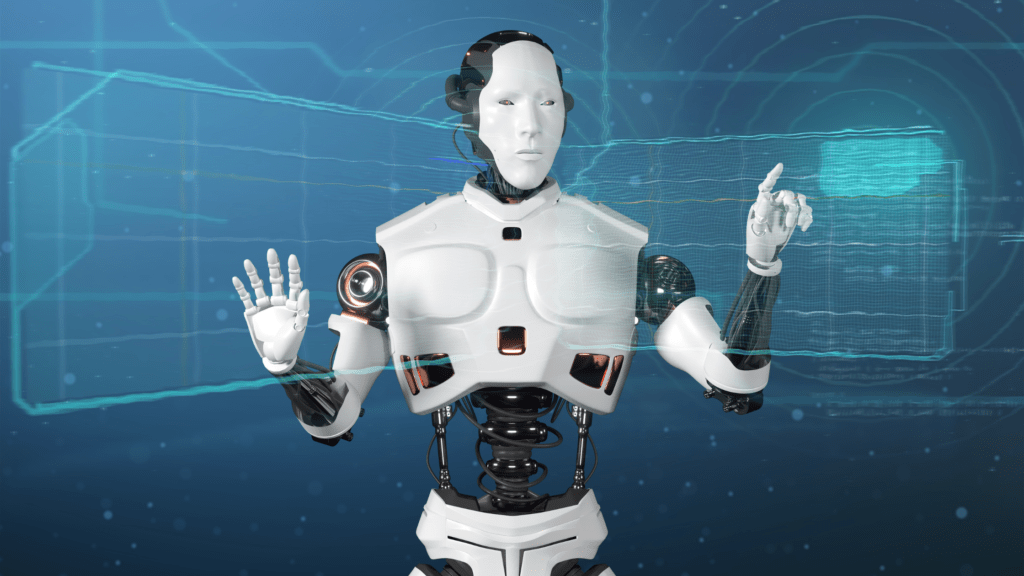Introduction
India is on the cusp of a technological revolution, with robotics at the forefront. The rise of robotics in India is transforming industries, creating new economic opportunities, and positioning the country as a significant player in the global tech arena. This article delves into the burgeoning field of robotics in India, exploring its past, present, and future.
Historical Background
Early Beginnings
The journey of robotics in India began in the early 20th century, with rudimentary mechanical devices paving the way for today’s sophisticated robots. Initially, these mechanical devices were simple automated machines used primarily in industrial settings. Early adoption in manufacturing laid the foundation for a robust robotics industry. The early attempts were humble, but they set the stage for significant advancements in robotics technology.
Evolution Over the Decades
Over the decades, India has witnessed a significant transformation in its robotics landscape. From basic automation in factories to advanced AI-driven robots, the evolution has been remarkable. During the 1980s and 1990s, India began integrating more sophisticated robotic systems into its industrial processes. The evolution accelerated in the 21st century with the advent of AI and machine learning, enabling robots to perform complex tasks with greater precision and efficiency.
Current State of Robotics in India
Key Industry Players
Several key players dominate the Indian robotics market, including TATA, Mahindra, and startups like GreyOrange and Addverb Technologies. These companies are at the forefront of innovation, developing cutting-edge robotic solutions for various applications. TATA and Mahindra are leveraging robotics to enhance manufacturing efficiency, while startups like GreyOrange are revolutionizing logistics with their warehouse automation solutions.
Government Initiatives
The Indian government has been proactive in promoting robotics through initiatives like Make in India and the National Robotics Mission. These initiatives aim to position India as a global hub for robotics manufacturing and innovation. The government’s support includes funding for research and development, incentives for startups, and collaboration with international partners to foster technological advancements in robotics.

Technological Advancements
AI Integration
Artificial Intelligence is revolutionizing robotics in India. Robots are becoming more intelligent and capable of performing complex tasks with precision. AI integration is enhancing their capabilities, making them indispensable in various sectors. For instance, AI-driven robots in manufacturing can predict equipment failures and optimize production processes, significantly improving efficiency and reducing downtime.
Machine Learning Capabilities
Machine learning is enabling robots to learn from experience, adapt to new environments, and improve their performance over time. This technological leap is crucial for applications in dynamic industries like healthcare and logistics. In healthcare, machine learning algorithms enable robots to assist in surgeries with high precision, while in logistics, they optimize route planning and inventory management.
Economic Impact
Job Creation and Skill Development
The rise of robotics in India is creating new job opportunities and necessitating the development of specialized skills. The demand for skilled professionals in robotics is driving educational institutions to offer relevant courses and training programs. Robotics in India is not only generating employment but also transforming the job market by requiring new skill sets, thus fostering a culture of continuous learning and innovation.
Boost to GDP
The robotics industry is contributing significantly to India’s GDP. Increased automation and productivity in various sectors are driving economic growth, making robotics a key player in India’s economic landscape. The integration of robotics in manufacturing, agriculture, and healthcare sectors is boosting productivity, reducing costs, and enhancing the overall economic output.
Educational Initiatives
Robotics in Schools and Universities
Educational institutions are incorporating robotics into their curricula, from primary schools to universities. This early exposure is fostering a new generation of innovators and problem solvers. Schools are introducing robotics clubs and competitions, while universities are offering specialized degrees in robotics engineering, preparing students for careers in this dynamic field.
Specialized Training Programs
Specialized training programs in robotics are equipping students and professionals with the skills needed to thrive in this rapidly evolving field. Institutes like the Indian Institutes of Technology (IITs) and National Institutes of Technology (NITs) are leading the way in robotics education. These programs focus on practical skills, research, and innovation, ensuring that graduates are well-prepared to contribute to the robotics industry.
Reference Books for Robotics in education
Startups and Innovation
Prominent Robotics Startups
Startups like Systemantics, Asimov Robotics, and Emotix are making significant strides in the Indian robotics industry. These companies are developing innovative solutions for diverse applications, from industrial automation to personal robotics. Systemantics is known for its industrial robots that enhance manufacturing efficiency, while Asimov Robotics focuses on service robots for healthcare and hospitality sectors.
Success Stories
Success stories of Indian robotics startups are inspiring. For instance, GreyOrange’s warehouse robots are revolutionizing logistics, and Systemantics’ industrial robots are enhancing manufacturing efficiency. These startups have not only achieved commercial success but also garnered international recognition, showcasing the potential of robotics in India on a global stage.
Industrial Applications
Manufacturing and Automation
Robotics is transforming manufacturing in India. Automated assembly lines, precision welding, and quality control are just a few areas where robots are enhancing efficiency and reducing human error. Companies are increasingly adopting robotics to streamline production processes, reduce labor costs, and improve product quality. The automotive and electronics industries, in particular, are significant beneficiaries of robotics in manufacturing.
Agriculture and Robotics
In agriculture, robots are addressing labor shortages and increasing productivity. From automated tractors to drone-based crop monitoring, robotics is revolutionizing farming practices in India. Robots are being used for planting, weeding, and harvesting, thereby increasing efficiency and reducing the dependence on manual labor. This technological advancement is crucial for India’s agriculture sector, which is often plagued by labor shortages and low productivity.
Reference books for Robotics in Agriculture

Healthcare and Robotics
Medical Robotics Innovations
Medical robotics is making waves in India. Robotic-assisted surgeries, rehabilitation robots, and AI-driven diagnostics are improving patient outcomes and transforming healthcare delivery. Robots like the Da Vinci Surgical System are enabling surgeons to perform minimally invasive surgeries with greater precision, reducing recovery times and improving patient outcomes.
Improving Patient Care
Robots in healthcare are not just about surgeries. They are also enhancing patient care through automation of routine tasks, enabling healthcare professionals to focus on more critical aspects of patient care. For instance, robots are being used for disinfecting hospitals, delivering medications, and assisting with patient mobility, thereby improving the overall efficiency of healthcare services.
Reference Books of Robotics in HealthCare
Social Implications
Workforce Displacement Concerns
The rise of robotics in India brings concerns about workforce displacement. While automation increases efficiency, it also poses challenges for workers whose jobs may be at risk. Addressing these concerns is crucial for balanced growth. Governments and businesses need to invest in reskilling and upskilling programs to help workers transition to new roles in the evolving job market.
Bridging the Digital Divide
Robotics in India has the potential to bridge the digital divide by bringing advanced technology to underserved areas. Affordable and accessible robotic solutions can improve quality of life and create new opportunities. For example, low-cost educational robots can enhance learning in rural schools, while agricultural robots can help small farmers improve productivity and income.
Challenges and Barriers
Technological Hurdles
Despite significant progress, several technological hurdles remain in the field of robotics in India. Challenges in AI development, battery life, and sensor accuracy need to be addressed to fully realize the potential of robotics. Continuous research and development are essential to overcome these obstacles and advance the capabilities of robots.
Regulatory and Ethical Issues
The rapid growth of robotics raises regulatory and ethical questions. Establishing frameworks for the safe and ethical use of robots is essential to ensure their benefits are maximized while minimizing risks. Issues such as data privacy, job displacement, and the ethical implications of AI-driven decisions need to be carefully managed through comprehensive regulations and ethical guidelines.
Future Prospects
Upcoming Technologies
The future of robotics in India looks promising with emerging technologies like quantum computing and advanced AI. These innovations will further enhance the capabilities and applications of robots. Quantum computing could revolutionize data processing in robotics, enabling more sophisticated AI algorithms and faster decision-making processes.
Potential Market Growth
The robotics market in India is poised for exponential growth. Increasing adoption across various sectors and continued innovation will drive this expansion, solidifying India’s position as a global leader in robotics. The market is expected to grow significantly, with robotics playing a crucial role in sectors such as manufacturing, healthcare, agriculture, and logistics.
Global Positioning
India in the Global Robotics Arena
India is emerging as a significant player in the global robotics arena. Collaborative efforts with international partners and a strong domestic market are boosting its global standing. India’s expertise in software development and engineering gives it a competitive edge in developing advanced robotic solutions that are both innovative and cost-effective.
Collaborative International Efforts
International collaborations are vital for advancing robotics in India. Partnerships with global tech giants and participation in international forums are fostering knowledge exchange and innovation. Collaborative research projects, joint ventures, and technology transfers are helping India stay at the forefront of global robotics advancements.

Case Studies
Notable Projects and Achievements
Several notable projects highlight India’s prowess in robotics. For instance, the Mars Rover project showcases India’s capability in developing sophisticated robotic systems for space exploration. Another example is the development of the Da Vinci Surgical System by Indian engineers, which has revolutionized robotic-assisted surgeries worldwide.
Lessons Learned
These projects offer valuable lessons in innovation, project management, and overcoming challenges. They serve as benchmarks for future endeavors in the Indian robotics landscape. The success of these projects underscores the importance of a collaborative approach, continuous learning, and a focus on quality and innovation in the field of robotics.
Conclusion
Summary of Key Points
The rise of robotics in India is marked by significant advancements, economic impact, and educational initiatives. The development of robotics in India has transformed industries, created new job opportunities, and positioned the country as a global leader in technology. Despite challenges, the prospects are bright, with India poised to become a global leader in robotics.
Looking Ahead
As we look ahead, continued innovation, supportive policies, and international collaborations will be crucial. The future of robotics in India holds immense potential, promising transformative changes across various sectors. By addressing challenges, investing in education and training, and fostering a culture of innovation, India can harness the full potential of robotics to drive economic growth, improve quality of life, and maintain its position as a global leader in technology. The rise of robotics in India is not just a technological revolution; it is a journey towards a more efficient, productive, and innovative future.
For more content follow Humstory













